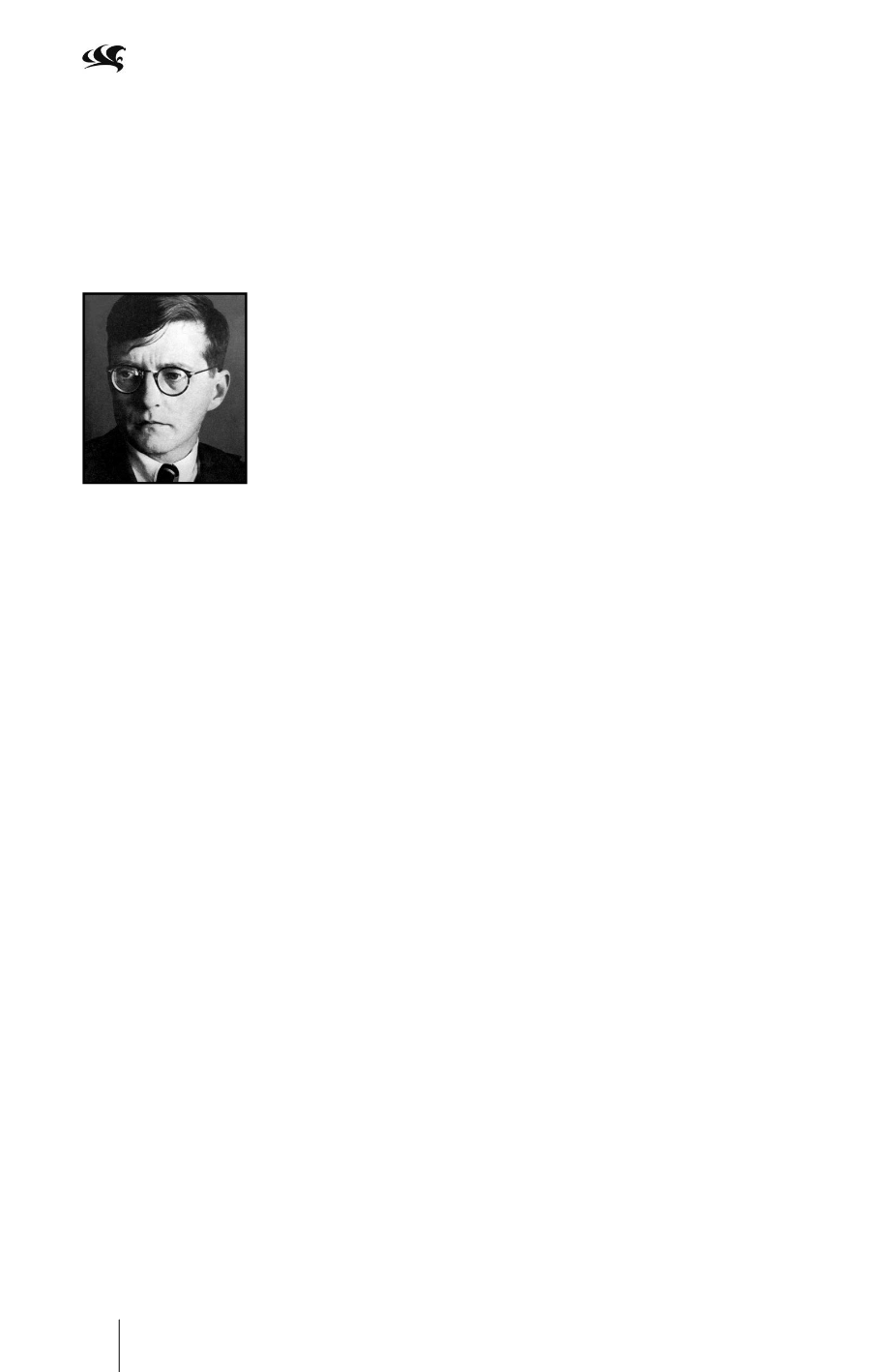
42 2014 Program Notes, Book 7
Friday, July 25 and Saturday, July 26, 2014
African cultures, spotlights a percussion ensemble of three tenor drums, cymbals
and bass drum to reflect its festive spirit right from the start, demanding at times fast,
light and precise articulation, as well as power and skill in navigating its polyrhythmic
riches. With a contemporary point of view, this freely rondo-based movement also
reprises the second theme of the opening movement, and introduces an exotic and
sensual melody from the piano echoed by oboe and bassoon accompanied by a
suggestive ostinato [repeating] rhythm on the strings and timpani that brings us to
a rousing crescendo finale.”
THE EXECUTION OF STEPAN RAZIN
, POEM
FOR BASS, CHORUS AND ORCHESTRA,
OP. 119 (1964)
Dmitri Shostakovich (1906-1975)
Shostakovich’s
The Execution of Stepan Razin
is scored for
three flutes, three oboes, four clarinets, three bassoons,
four horns, three trumpets, three trombones, tuba, timpani,
percussion, two harps, piano, celesta and strings. The
performance time is 25 minutes. The Grant Park Orchestra and
Chorus first performed this work on August 25, 1979. Leonard Slatkin conducted and
Arnold Voketaitis was the soloist.
Nikita Khrushchev rose to power in the years after Stalin, proclaiming a “thaw”
in the Russian artistic climate and seeking warmer relations with the West. The
times allowed for artistic creations that diverged from the Party line and that even
offered some criticism of the entrenched political forces. One such specimen was
Yevgeny Yevtushenko’s poem
Babi Yar
, which assailed the Soviet government for
anti-Semitism and repression of minorities. Shostakovich was drawn to the poem,
and set it and four others by Yevtushenko for bass soloist, chorus and orchestra as
his Symphony No. 13 in 1962. (Babi Yar is the name of a deep ravine near Kiev, where
the Germans rounded up all the city’s Jews in September 1941 and systematically
machine-gunned them. Thousands more — Jews, Ukrainians, Russians — died at
Babi Yar during the two years of the German occupation.)
In 1964, Shostakovich again took up a text by Yevtushenko through which
he displayed what Malcolm MacDonald, in his study of the composer, called his
“vituperative disgust” with Soviet officialdom. The verses were drawn from a
historical episode about the 17th-century rebel leader Stepan Razin that Yevtushenko
had worked into a long poem titled
The Bratsk Hydroelectric Power Station
after a
dam then being built in Siberia; the station was the largest project of its kind in the
world upon its completion in 1967. Stepan Razin — “Stenka” in the fond diminutive
of the Russians who viewed him as a hero (though Shostakovich retained Stepan
in his title out of respect) — was born around 1630 into the fiercely independent
Cossack people of the Don River area in southern Russia. (“Cossack” comes from
the Turkic “
ka
zak
,” meaning an “adventurer” or “free man.”) When the Russians
began to infringe upon the political autonomy they had guaranteed to the Cossacks
by treaty in the 1650s in exchange for protecting their southern border from Persian
aggression, Razin and others rebelled. Between 1667 and 1670, Razin led a raw and
undisciplined force of Cossacks and landless peasants against Czar Alexis’ outposts
along the Volga, and got as far as Simbirsk (today Ulyanovsk) in central Russia before
he was defeated and taken captive on April 24, 1671. By December, the Czarist army
had quashed the rebellion. Razin was taken to Moscow, where he was executed
in Red Square by torture and quartering. Though Razin was relegated to minor
status in the official Russian and Soviet histories because of the looting and wanton


